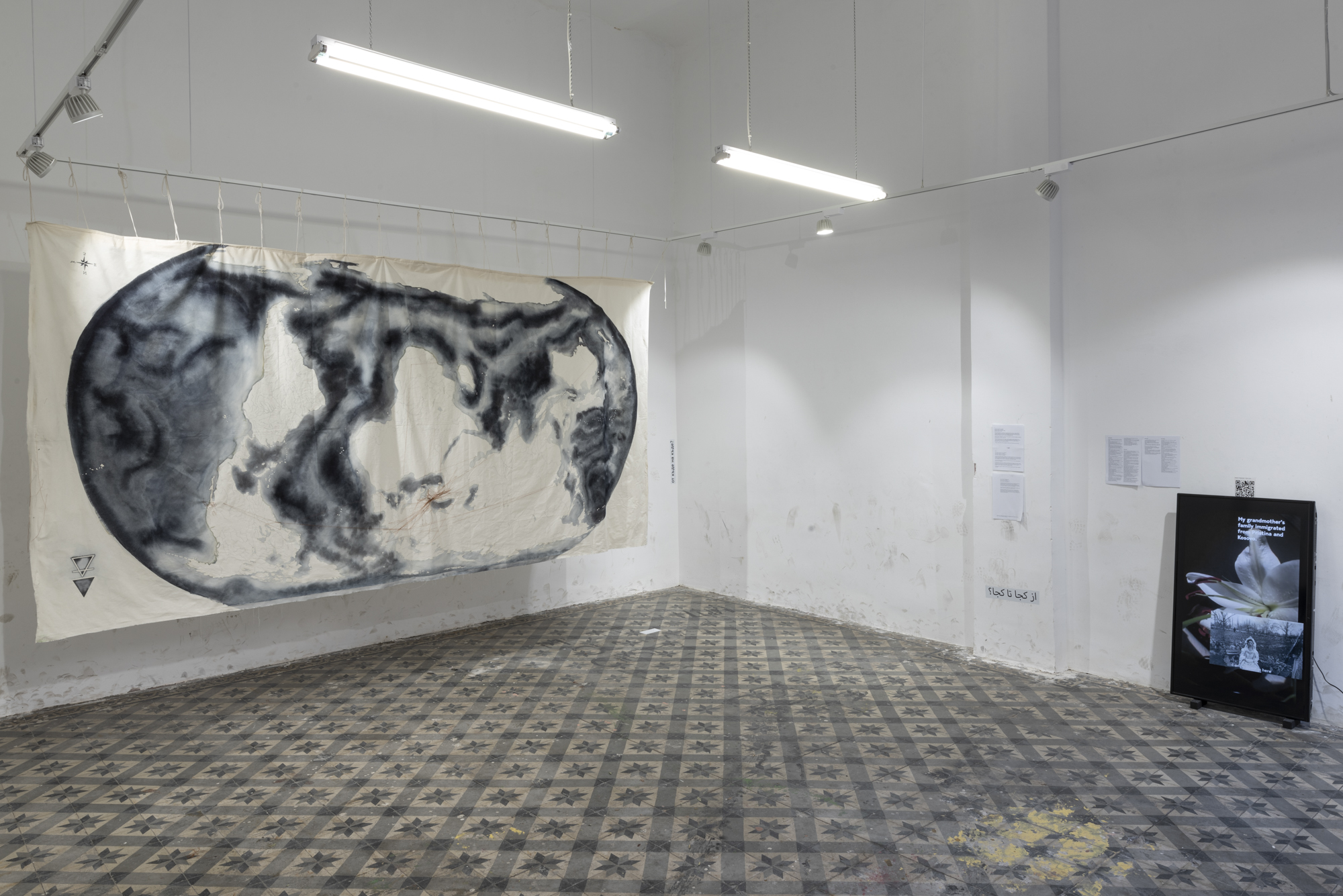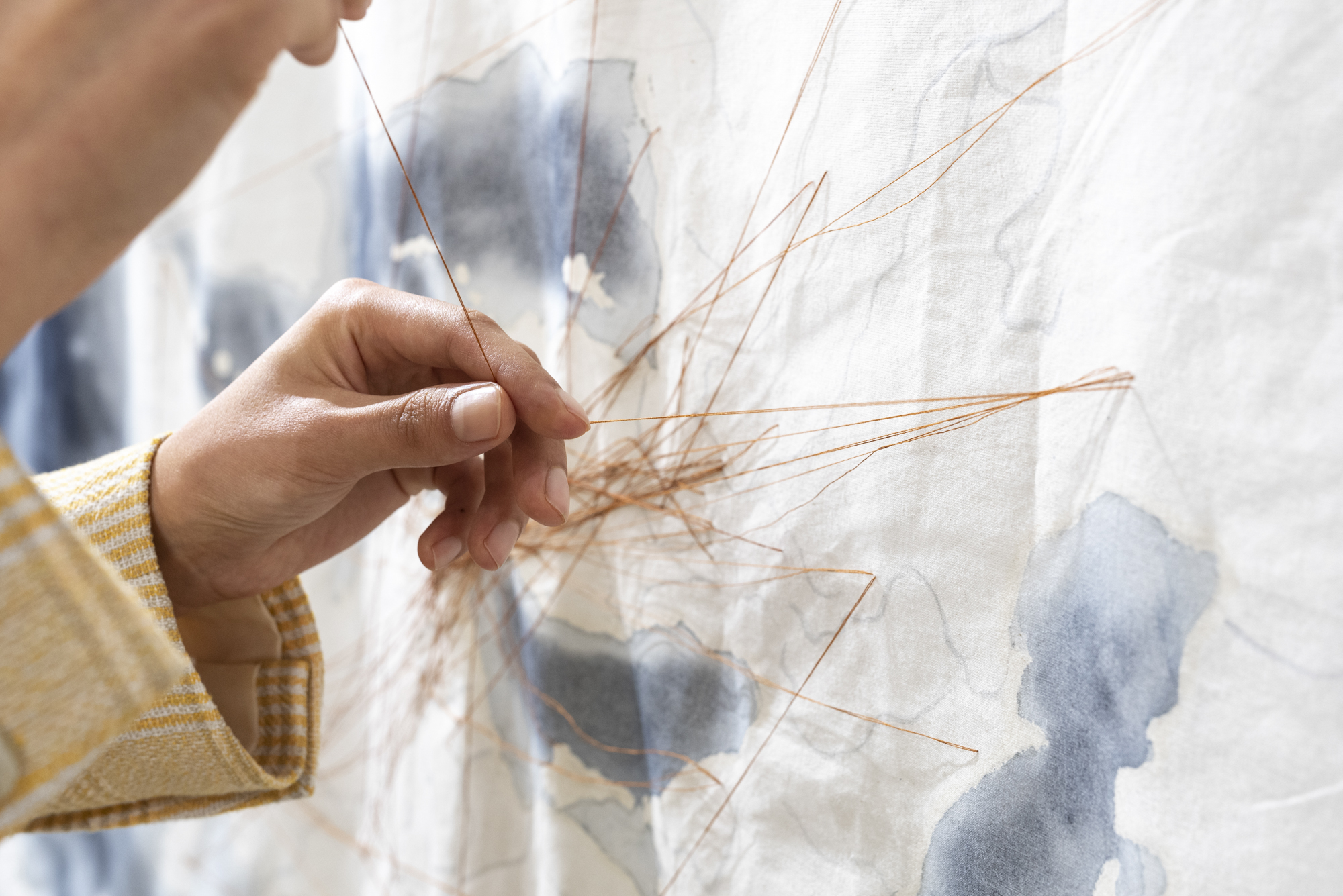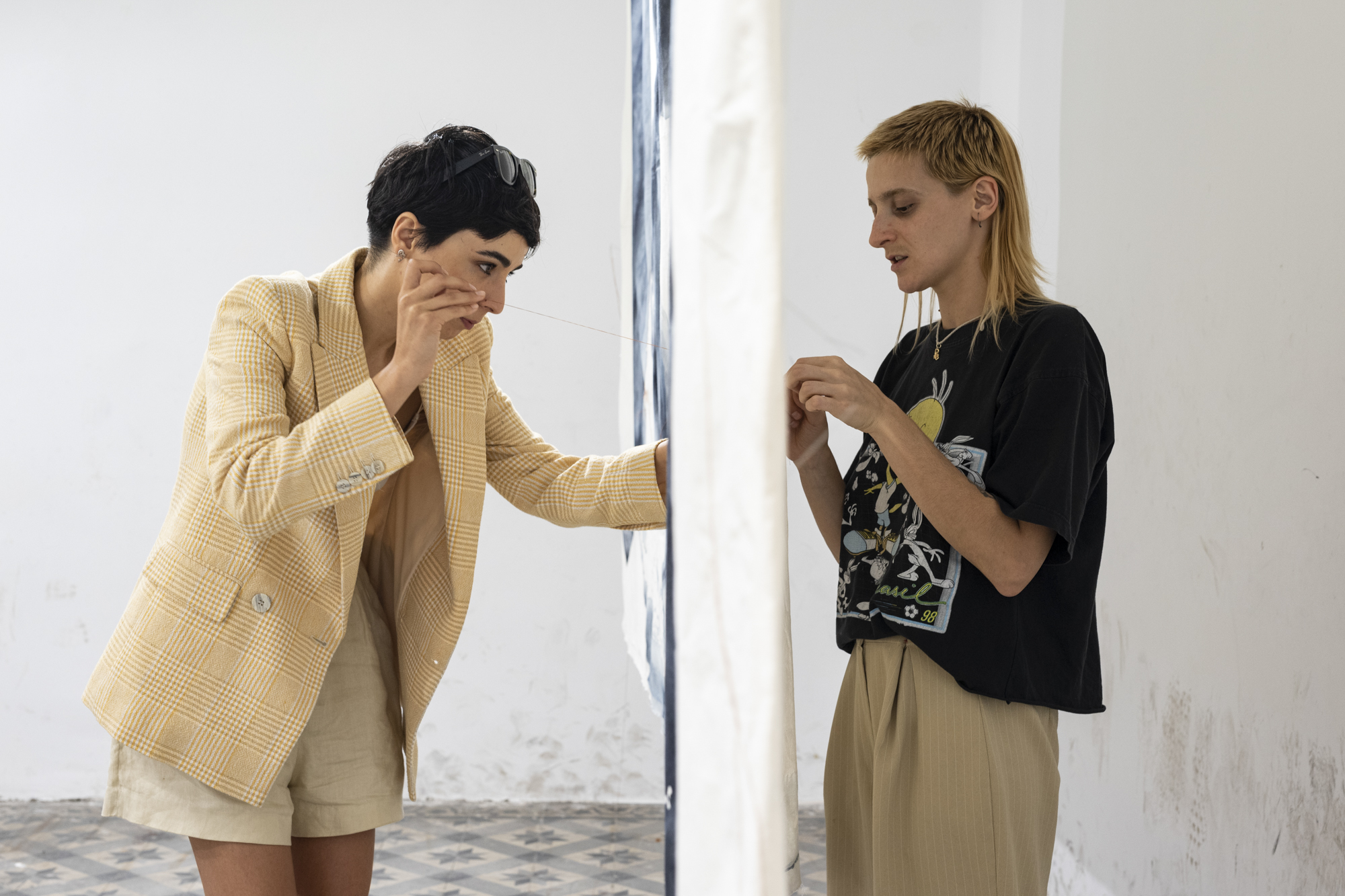 ‘‘From where to where’’ by sub, took part in Mahalla Festival, Murmuration, 2021 [All photos courtesy of Zeynep Fırat]
‘‘From where to where’’ by sub, took part in Mahalla Festival, Murmuration, 2021 [All photos courtesy of Zeynep Fırat]
‘‘From where to where’’ by sub co-curated by Melih Aydemir and İlayda Tuncay, with support from Berçem Gözde Ölmez and Derin Uludağ
‘‘Coming from a nation state where ethnicities were unified with erasure, thinking through maps and boundaries (what they have taken away from us / what we were given by them) imagining and deconstructing the way we see the planet we live on which were defined and visualized by the colonizer not only de-centers the Eurocentric episteme of social sciences, it offers a moment for us to cut through the umbrella terms.
The upside-down map has been essential to decolonial imagination. Taking the center of the map out of Europe and the global north to shift the narrative, DELETE the political lines, see the world as it is where the water draws the lines (and see the world as we want it to be: reversed, glitched, queered and false) let us to find possibilities of transnational solidarity.’’ (Melih Aydemir)
 ‘‘The world's largest upside-down water map’’ produced Banu Germenli, Berçem Gözde Ölmez, Derin Uludağ, İlayda Tunca and Orhan Mert (Concept: İlayda Tunca and Melih Aydemir)
‘‘The world's largest upside-down water map’’ produced Banu Germenli, Berçem Gözde Ölmez, Derin Uludağ, İlayda Tunca and Orhan Mert (Concept: İlayda Tunca and Melih Aydemir)Painted with indigo pigment on an eight-square-meter fabric, "The world's largest upside-down water map", turned today's western-centered perception of the world upside down and reproduced the image of it through a single signifier (water). The map was displayed open to intervention with needles and threads together with a survey during the festival.

‘‘Can institutionalized national narratives and internationally controversial values, which are the elements of these narratives, seized and monopolized in geographies such as Turkey, where multi-contact and ethnic diversity is intense, be seen as intersection points of intercultural interaction?
Can the cultural codes adopted through our personal histories reveal insights into inter-geographical interactions on a larger scale?
A reversed world map offers a new imagination of the world. ‘From where to where?’ is not concerned with the relationship between a beginning and an end point, but with where we are now and where we came from.’’ (İlayda Tunca)


In the video installation accompanying the map, the artists examine cultural transformation through different living environments together with their personal migration histories. It focuses on the questions of absence of a meal, a breakfast table, a manuscript or family archives can bring to the present day.






